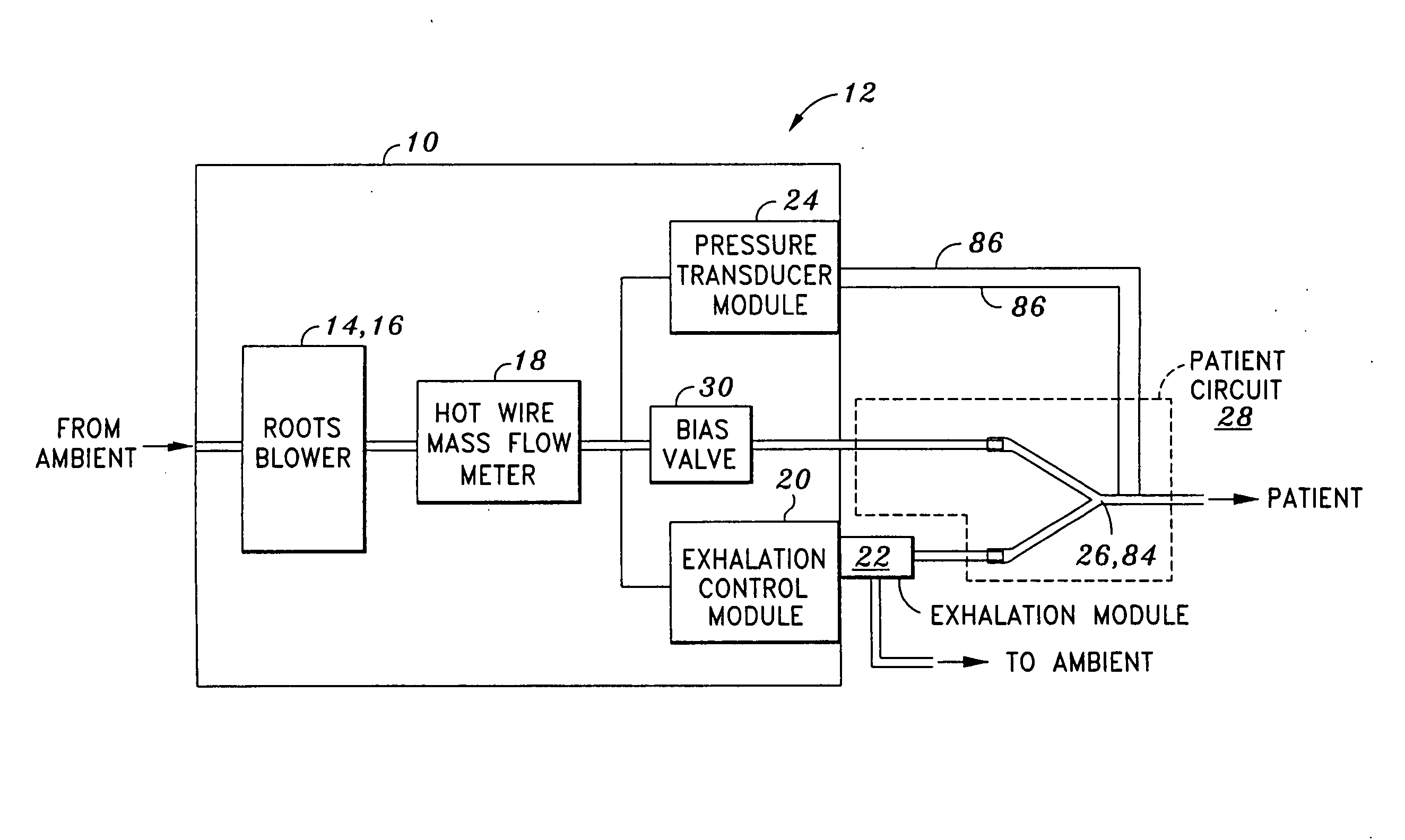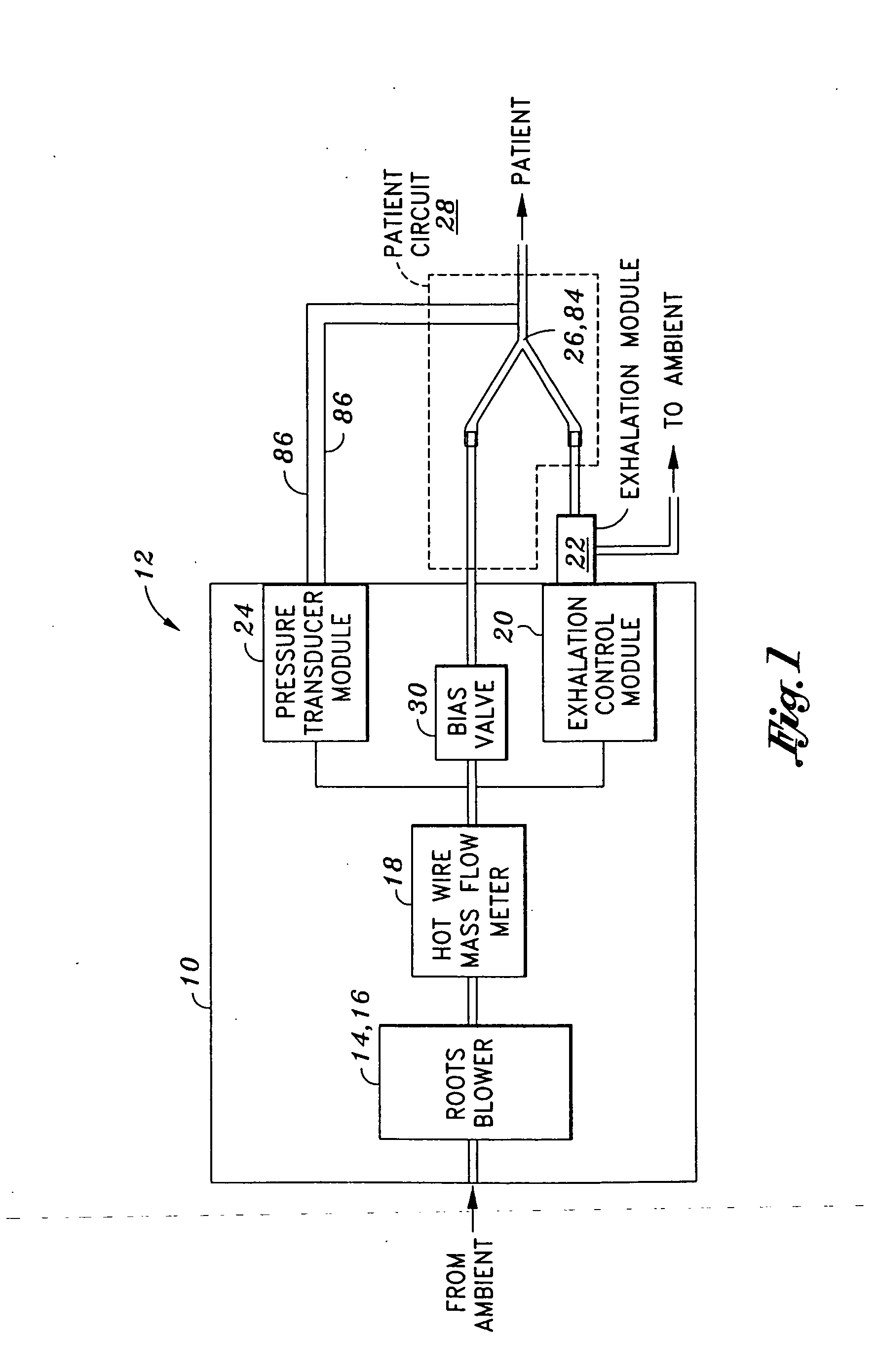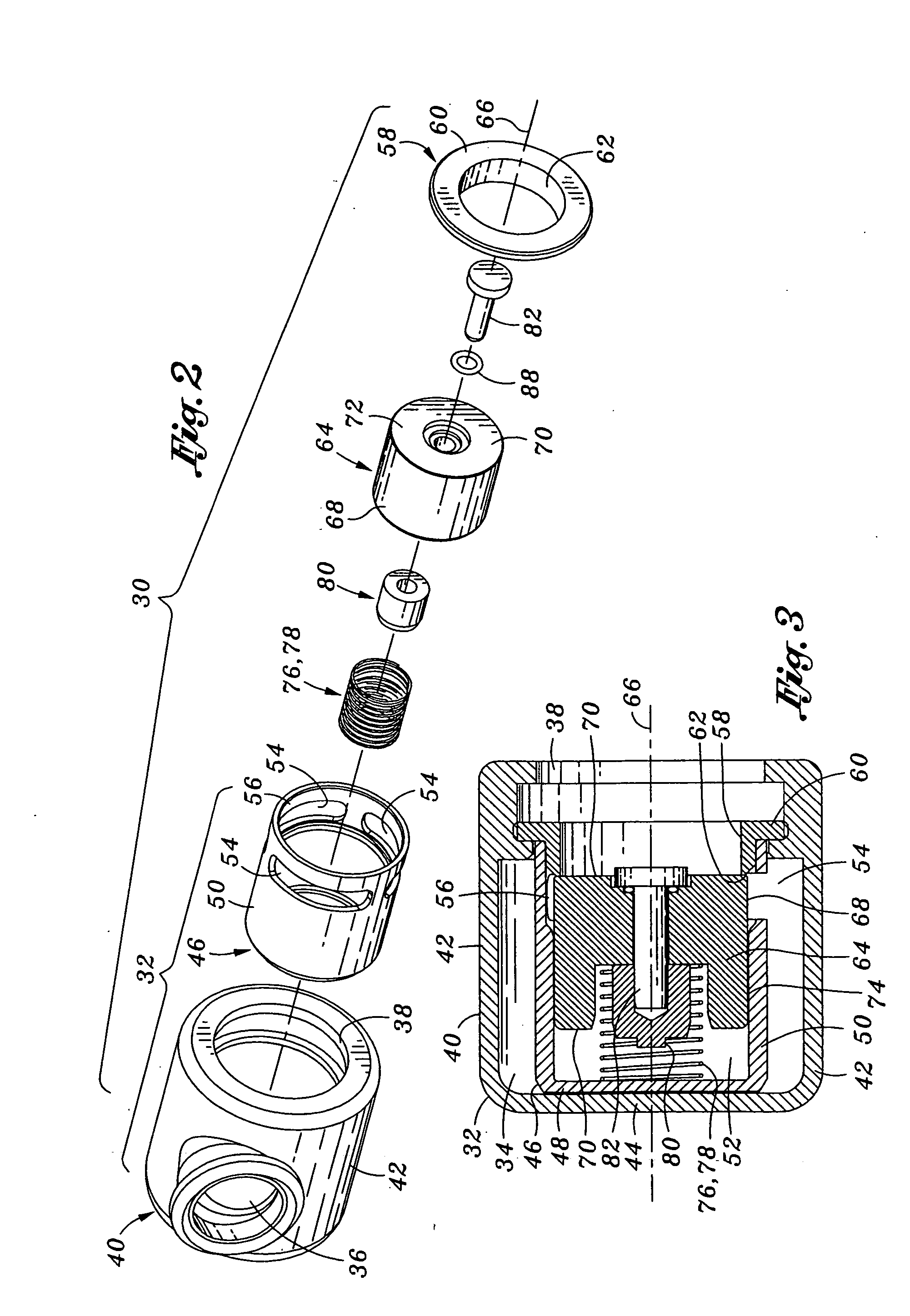Mechanical ventilation system utilizing bias valve
a mechanical ventilation and bias valve technology, applied in the field of mechanical ventilators, can solve the problems of inability to accurately measure the flow output of the ventilator, the efficiency of the ventilator is typically low, and the prior art mechanical ventilators have not been truly portable devices. achieve the effect of viscous damping and accurate measurement of the flow outpu
- Summary
- Abstract
- Description
- Claims
- Application Information
AI Technical Summary
Benefits of technology
Problems solved by technology
Method used
Image
Examples
Embodiment Construction
[0021] Referring now to the drawings wherein the showings are for purposes of illustrating the present invention and not for purposes of limiting the same, shown is a portable mechanical ventilator 10 having a blower assembly 14 such as a Roots blower 16 for producing gas flow to a patient or patient circuit 28 via a patient connection 26. As is described in greater detail in U.S. Patent Publication No. 2005 / 0051168 entitled PORTABLE VENTILATOR SYSTEM to DeVries et al., the entire contents of which is expressly incorporated by reference herein, the portable ventilator 10 operates in variable speed mode as the breath delivery mechanism and has improved efficiency and reduced size resulting from the use of the Roots blower 16.
[0022] The portable mechanical ventilator 10 preferably includes sound-reducing elements to facilitate operation thereof in noise-sensitive environments such as in a patient-recovery room of a hospital. Furthermore, the portable mechanical ventilator 10 has redu...
PUM
 Login to View More
Login to View More Abstract
Description
Claims
Application Information
 Login to View More
Login to View More - R&D
- Intellectual Property
- Life Sciences
- Materials
- Tech Scout
- Unparalleled Data Quality
- Higher Quality Content
- 60% Fewer Hallucinations
Browse by: Latest US Patents, China's latest patents, Technical Efficacy Thesaurus, Application Domain, Technology Topic, Popular Technical Reports.
© 2025 PatSnap. All rights reserved.Legal|Privacy policy|Modern Slavery Act Transparency Statement|Sitemap|About US| Contact US: help@patsnap.com



